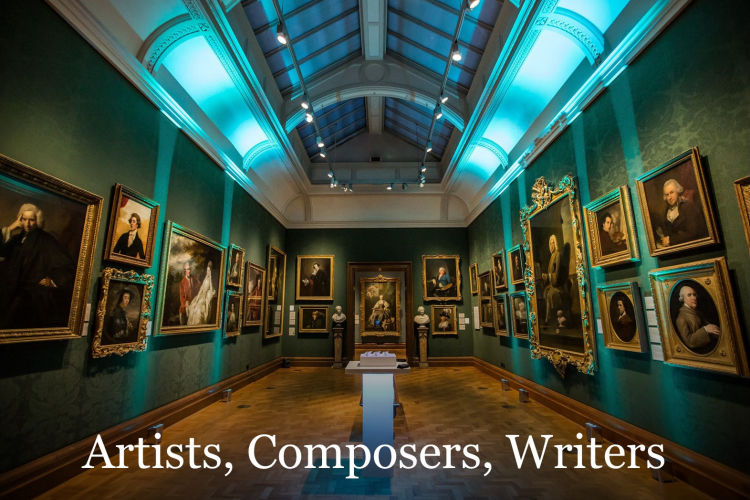4. Recognition.
Unlike previous classes (and the way I announced this one), there will not be two or three featured artists whose work
we shall study in detail, but over a dozen others—poets, painters, and composers—who for one reason or another have
looked Death in the eye. The reasons include age, sickness, suicide, war, or simply an elegiac disposition. Sometimes
the closeness of death has brought about a marked change in manner; it others, it has emphasized tendencies that were
there all along, so not all these last works imply a Late Style. And not all are neccessarily morbid; we shall find
examples that approach Death with courage, passion, clear-eyed recognition, and even humor.
Since this class contains so much poetry, I advise reading the
texts in advance. rb.
Here are brief bios of the artists and poets whose works come into the class, listed in chronological order of birth.
You can access all biographies via the BIOS link on the syllabus page.
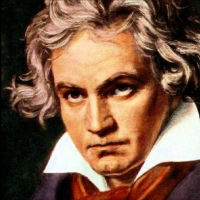 |
Ludwig van Beethoven, 1770–1827. German composer, working primarily in Vienna.
The dominant composer of his time, Beethoven wrote 9 symphonies, 16 string quartets, and 32 piano sonatas, among numerous other works. From about 1800 onwards, increasing deafness gradually put an end to his performing career, although he wrote some of his finest works when totally deaf. He is one of the first composers to exhibit a distinct late style.
|
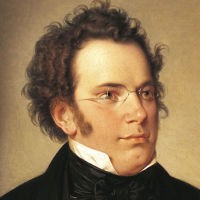 |
Franz Schubert, 1787–1828. Austrian composer.
Although he died before his 32nd birthday, Schubert was extremely prolific as a composer, writing symphonies, masses, chamber music, piano sonatas, and over 600 songs, both individually and in cycles. Though little known in his lifetime, his work was rediscovered and championed by Mendelssohn, Liszt, and Brahms, making him in effect the source of the German Romantic movement.
|
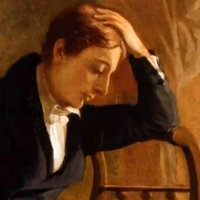 |
John Keats, 1795–1821. English poet.
Keats was a second-generation Romantic, contemporary with Byron and Shelley. By the time he died of tuberculosis at the age of 25, he had been publishing for less than four years. Nevertheless, later critics have hailed him as one of the greatest English poets, especially for his Sonnets and series of Odes.
|
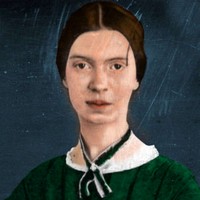 |
Emily Dickinson, 1830–86. American poet.
As she lived in Amherst for her entire life, latterly refusing to leave her family home, Dickinson's prolific output was virtually unpublished in her lifetime, and was subject to editing after her death to bring it more in tune with contemporary aesthetics. But it is precisely the unconventional nature of her verse, with its short lines and slant rhymes, that has led to her recognition as one of the leading Americal poets of her time.
|
 |
Paul Gauguin, 1848–1903. French painter, sculptor, and ceramicist.
With Cézanne and Van Gogh, Gauguin is considered one of the giants of Post-Impressionist French painting, and arguably the most directly influential. A master of color, he depicted peasant scenes from Brittany, Tahiti, and the Marquesas Islands, many of them with a distinct religious or philosophical content.
|
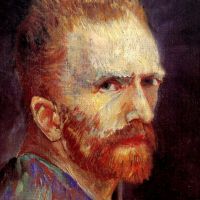 |
Vincent van Gogh, 1853–90. Dutch Post-Impressionist painter.
Beginning in his native Holland with dark paintings of peasant life, his style was transformed when he went to Paris in 1886, and thence to Arles, where he lived with Paul Gauguin. Although prolific in his output, he suffered from severe depression and eventually brought on his own death, while living close to his doctor in the north of France.
|
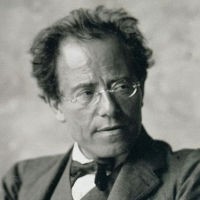 |
Gustav Mahler, 1860–1911. Austrian composer and conductor.
In the summers during his appointment as director of the Vienna State Opera, he completed nine symphonies, numerous songs, and his masterpiece, the "song-symphony" Das Lied von der Erde (The Song of the Earth, 1909). His works typically use very large orchestras and incorporate a wide range of musical styles.
|
 |
August Stramm, 1874–1915. German playwright and poet.
As a poet and playwright, Stramm kept company with the German Expressionists in the early years of the century, and was considered a leader among them. His radical style, consisting of staccato words and phrases unconnected by syntax, proved utterly appropriate to describe the First World War, in which he lost his life.
|
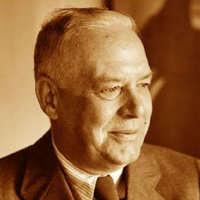 |
Wallace Stevens, 1879–1955. American poet.
The winner of the Pulitzer Prize in 1955, Wallace Stevens established himself as one of the leadingModernist poets in America, while earning his living as an Insurance executive. His poem "Thirteen Ways of Looking at a Blackbird" has been set by numerous composers.
|
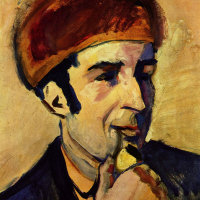 |
Franz Marc, 1880–1916. German painter.
Visits to Paris introduced him to the work of Van Gogh, which nudged his style towards Expressionism, and led to his joining with Macke and Kandinsky in the Blaue Reiter group in 1911. His somewhat mystical disposition led him towards an abstract style depicting the inner lives of animals. He died fighting in WW1.
|
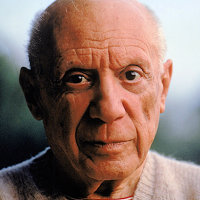 |
Pablo Ruiz Picasso, 1881–1973. Spanish painter, printmaker, and sculptor.
Picasso's invention of Cubism around 1910 (with Georges Braque) made him arguably the most important figure in 20th-century art. However, his entire career from precocious youth to energetic old age was distinguished by rapid changes of style, constant experimentation with new media, and a gift for finding the exact image to capture an historical moment, as in his Guernica of 1937.
|
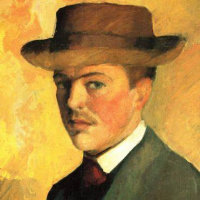 |
August Macke, 1887–1914. German painter.
With Kandinshy and Marc, Macke was a co-founder of the Blaue Reiter group of German Expressionists in 1911, but his style was more influenced by French examples, his color less strident and more harmonious, and his subjects less abstract. He was killed in the first year of WW1.
|
 |
Otto Dix, 1891–1969. German painter.
After service in the First World War, recorded in some of his most savage paintings, Dix became a critical commentator on social conditions in the Weimar Republic.
|
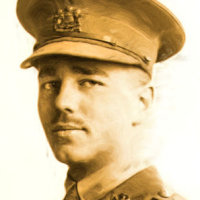 |
Wilfred Owen, 1893–1918. English poet.
Owen's poetry of the First World War emphasizes its futility and horror, in contrast to the stoic patriotism in vogue at the time. He himself was killed in the last week of the war. His establishment as preeminent poet of the war was greatly aided by Benjamin Britten's War Requiem (1960), which sets Owen's poetry against the Latin text.
|
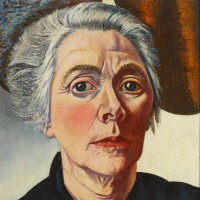 |
Charley Toorop, 1894–1955. Dutch painter.
Charley (Annie Caroline Pontifex) Toorop was the daughter of the Dutch Modernist painter Jan Toorop. She painted portraits and other figure subjects with a bold intensity that suggests more than its surface reality.
|
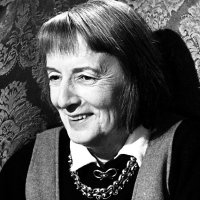 |
Stevie Smith, 1902–71. English poet and novelist.
Florence Margaret Smith, known as "Stevie," published three novels and nine volumes of poetry during her lifetime, many of which deal directly with the subject of death. The 1978 film Stevie was based on her life.
|
 |
Mark Rothko, 1903–1970. American painter.
Rothko, born Markus Yakovlevich Rothkowitz, came to the United States from Latvia as a child. His iconic paintings, consisting of fuzzy colored rectangles stacked vertically, established him as one of the leading Color Field artists of the mid-century. His final work was a series of twelve dark canvases for a non-denominational chapel in Houston, Texas.
|
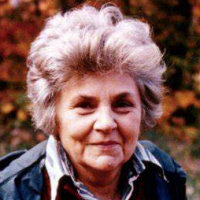 |
Elizabeth Bishop, 1911–79. American poet.
Moore, who was born in Massacusetts but brought up in Noval Scotia, originally wanted to become a composer, but was steered into poetry by Marianne Moore; later, she became a close friend of Robert Lowell. She has been hailed as the most gifted poet of her generation.
|
 |
Sylvia Plath, 1932–1963. American poet and novelist.
Plath began publishing when a student at Smith College. Coming to England, she met and married the future Poet Laureate Ted Hughes, and had two children with him before the marriage collapsed. Her life was punctuated by several attempts at suicide, which finally succeeded, but her conflicting energies gave rise to the poems of her remarkable posthumous collection, Ariel.
|
























